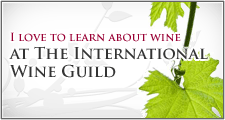No Wine is an Island:
It’s easy to assume that New Zealand is a lot like Australia with its geographical proximity to the Outback: visitors may often be on the lookout for crocodile wrestling and Nicole Kidman sightings. Despite this assumption, New Zealand is a country all its own. Located halfway between the South Pole and the Equator, this nation is divided into the North Island and the South Island, with several smaller islands peppered in; it is a country filled with culture, history, and, of course, flora. Due to recent advances, it is now a country also filled with wine.
In the book of wine history, New Zealand hasn’t had much of a place, exiled to the small font of the index page. With diseases, poor quality grapes, and inexperienced farmers all serving as factors, its wines have been kicked out of liquor stores and booted out of bars. Nonetheless, these wines refused to stay out, sitting behind their vines and sulking; they decided to try again.
Perhaps it was the perseverance of the winemakers, or the zeal that partly makes up the nation’s name, but something kept the New Zealand wine industry going. After a hundred and forty years of poor quality wine, things changed: vineyards became more innovated and the lessons from experience began to stick, giving this nation’s wine a second chance. By the early 1990’s, New Zealand wine had found a place: their grapes shed their former skins and emerged into something special.
The four years between 1994 and 1998 were literally a time of growth for the New Zealand wine industry: the number of winemakers increased from 31 to 293, the number of wineries tripled, and the amount of land reserved for viniculture nearly doubled. But the wine industry, as a whole, still remained small: presently, New Zealand produces an annual amount of wine that is one twelfth of Australia’s stock.
Greatly influenced by the English, Scottish, Irish, Asian, Polynesian, and Maori cultures, New Zealand as a country is a bit of a melting pot, and this shows in its wine: there are as many kinds of grapes as there are kinds of people. Over 20 varieties of grapes are grown in the ten main growing regions located all across the country. These grapes are made into wines at wineries that range from large to small.
So, What’s the Zeal?
New Zealand is known in particular for white wine, with 75 percent of wine produced being of this type. One white wine, the Sauvignon Blanc, is very much the grape of this country’s eye; it is the wine that put this nation on the map. With a flavor and a sharpness said to trump all others, this Sauvignon Blanc is one the most well-liked wines around. Many people attest that New Zealand produces the best Sauvignon Blanc in the entire world.
Red wines are, however, not absent; they are starting to be produced more frequently. Cabernet and Merlot are helping the red wine industry by climbing up the corporate vine, but the true red wine of New Zealand is Pinot Noir. This wine is becoming increasingly more and more popular; soon it may rival Sauvignon Blanc for prom queen.
New Zealand is home to vineyards extremely close to the ocean. When this is coupled with a southern location, possessing vineyards that are the southernmost in all the word, a different kind of climate is introduced to the grape. With a different kind of climate comes a different kind of wine. Marked by weather that is cool and consistent, the grapes of New Zealand are able to ripe at a slow, steady pace. This produces a wine that is intense, sharp in flavor and tastes like no other.
The rocky start behind them, New Zealanders are looking to the future of wine with their chins, and their glasses, held high. With the production of Sauvignon Blanc, and Pinot Noir, not to mention the hype the Riesling is creating, there is no knowing where the New Zealand wine culture will sit in the future. Chance are, it will sit among the best wine cultures in the world, known as one of the greatest lands for wine anywhere, not just north of the South Pole.






